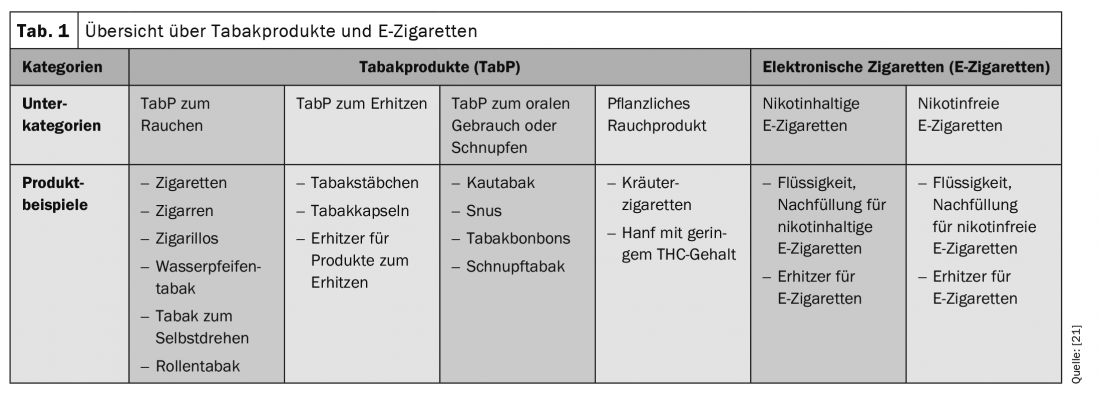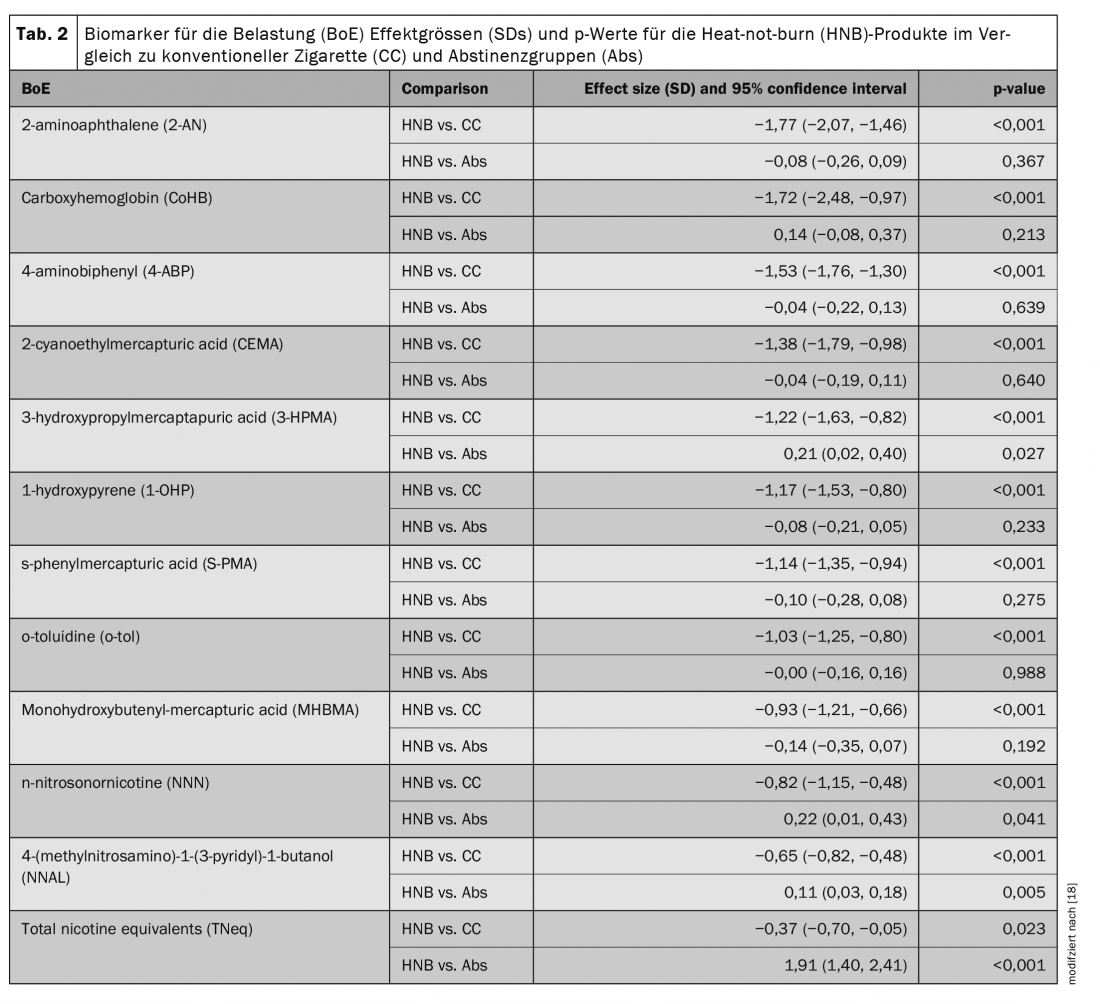Tobacco is still on everyone’s lips, but no longer necessarily in the form of a cigarette, cigar or pipe. There are now a variety of alternative products for smokers, some of which are controversial. According to some studies, they can be used as an effective smoking cessation aid. But what are we actually talking about when we talk about e-cigarettes and the like?
The tobacco market has changed in recent decades. When the harmful effects of smoking on health became known, many efforts were made to increase the number of non-smokers – with rather moderate success. A greater emphasis was then placed on smoking cessation. However, even with the help of nicotine replacement products, medications as cessation aids or supportive measures, the proportion of smokers does not drop significantly. Alternative nicotine products without combustion have taken a different route. E-cigarettes and tobacco heaters are characterized by the fact that they release nicotine via an aerosol created by the vaporization of a liquid or the direct heating of specially prepared tobacco. In contrast to conventional cigarettes, the number and concentration of harmful substances produced by the combustion process is significantly reduced [1–4]. In the report to the Commission for Social Security and Health (SGK), the Federal Office of Public Health (FOPH) concluded that “the risks associated with e-cigarettes and tobacco products for heating are most likely lower for smokers compared to cigarette smoke than those from conventional cigarettes” [5].
The beginnings go back a long way
The history of the e-cigarette is longer than one might think. It began as early as 1963, when Herbert A. Gilbert submitted a drawing for the first electric cigarette for a patent in America. However, this idea never made it past the prototype stage. At the same time, the invention was already very similar to today’s e-cigarette. With the help of batteries, a liquid in a tank should be heated and thus evaporated. It was not until the new millennium that the Chinese pharmacist Hon Lik took up the idea again and successfully developed the existing principles. In 2004, the first e-cigarette ready for mass production came onto the market from China. The first model did not have the now typical heating coil-wick system. Instead, a piezoelectric element that emits ultrasonic waves was used. Today, most e-cigarettes are based on a battery-powered heating element that vaporizes a liquid. This resulting vapor or aerosol is then inhaled. The liquid, called liquid, usually consists of glycerin, propylene glycol, water, as well as liquid nicotine and flavorings – depending on your choice. Otherwise, the functional principle has hardly changed. However, the performance and quality are under permanent development [6].
The principle of the tobacco heater has also been around longer than is often assumed. Work began on developing electronic tobacco products as early as the 1960s. However, these did not make it onto the market for a long time. Then, in 1998, the first device that heats tobacco electronically was launched – a failure. In 2006, the second attempt followed with “Heatbar” in Switzerland and Australia. But this one also failed. It failed with consumers as being too bulky and having a bad taste. But the developers did not give up, and so at the end of 2014 the IQOS tobacco heating system (THS) was launched initially as a pilot project in Italy and Japan. One year later, the THS took off worldwide and has been continuously developed ever since [7–9].
E-cigarette and tobacco heater – one and the same?
To say it right away: No, although they both work without burning tobacco, e-cigarettes and tobacco heaters are not the same. Since there is no standardized nomenclature yet, they like to be lumped together because both are battery powered, both generate an aerosol, and neither produces ash. However, the two systems are otherwise fundamentally different from each other. The main difference is that e-cigarettes vaporize so-called liquids, which are flavored and contain only nicotine extracted from the tobacco plant. Tobacco heaters, also known as “heat-not-burn” products, on the other hand, use specially prepared tobacco that is heated directly rather than burned to generate an aerosol (Table 1) .

E-cigarettes are distinguished between so-called closed and open systems. In the case of closed systems, one purchases the refill cartridges suitable for the respective product, which contain the desired liquid. In most cases, only the refill cartridges, also called “pods”, are replaced and the device is then immediately ready for use again. In Switzerland, according to the Cassis de Dijon principle which refers to EU standards, a nicotine concentration in the pods of maximum 20 mg/ml is allowed. This corresponds to the nicotine content of about one pack of medium-strength conventional cigarettes. In contrast, pods with up to 60 mg/ml nicotine are available in the US. Open systems, on the other hand, are not tied to a specific supplier and can be filled with different liquids. It can be mixed flavor and nicotine strength individually. The devices then to be tuned according to the respective specifications, so-called “devices”, are more suitable for connoisseurs. Currently, open systems still dominate in Switzerland, although closed systems are becoming increasingly popular [10]. Meanwhile, the so-called fourth generation of e-cigarettes is already on the market, which are significantly more powerful, especially in terms of nicotine release due to stronger batteries, larger tanks, higher atomizers and better cartridges. The length and intensity of consumption can be customized compared to conventional cigarettes, where the “cigarette length” is predetermined. Currently, hundreds of different devices and thousands of types of liquids are available on the market.
Tobacco heaters have been available from three major tobacco companies on the Swiss market since 2015, but only one has prevailed here to date: The THS IQOS from Philip Morris. The Glo and PloomTech tobacco heaters are no longer available in Switzerland. The THS heats a specially designed tobacco stick containing real tobacco, called “HEETS”, to a precisely controlled temperature range of up to a maximum of 350°C using a patented heating system. This temperature is well below the range of combustion. A nicotine-containing tobacco aerosol with the taste of real tobacco is produced when the tobacco stick, containing 0.5 mg of nicotine, is inserted into the heater and heated by pressing a button. The consumption time is about the same as a conventional “cigarette length” of six minutes [11].
Tobacco Products Act expected in 2023
In Switzerland, the products are currently not regulated in a uniform manner. E-cigarettes currently still fall under the scope of the Food Act, with tobacco heaters running as a tobacco product under the current Tobacco Ordinance. In order to market a tobacco heater in Switzerland, an official authorization from the FOPH is required, in which the substances used to manufacture a tobacco product are clearly regulated [12]. This is expected to become more concrete with the Tobacco Products Act, expected in 2023. The goal is to create frameworks that reduce tobacco-related death and disease [13]. For example, a uniform sales age of 18 is to be set and advertising opportunities are to be further restricted.
Potentially reduced risk
Even though the FOPH argues that e-cigarettes and tobacco heaters most likely pose less risk to smokers than conventional cigarettes, there is a lively and highly controversial debate in the public health community on this topic [5]. Significant added public health value according to the principle of harm reduction can only be achieved if large numbers of adult smokers choose potentially less harmful alternatives because they provide adequate nicotine delivery and satisfaction to prevent relapse to cigarette smoking. In addition, a complete switch from cigarettes to an alternative nicotine product should be made, rather than the “dual-use” that is often practiced. If a smoker reduces his or her cigarette consumption from 20 cigarettes a day to just one, the risk of cardiovascular disease is reduced by only 50% [14].
A clinical trial from Italy took a closer look at the acute effects of e-cigarettes, tobacco heaters, and conventional cigarettes on smokers. End points were oxidative stress, antioxidant reserve, platelet activation, flow-mediated dilation, blood pressure, and satisfaction scores. Acute effects differed markedly, with conventional cigarettes showing the greatest adverse changes in clinically relevant characteristics [15].
In the case of e-cigarettes, exclusive studies are difficult to conduct because of the wide variety of devices and liquids and the rapid generational change. This is because all products are extremely different from one another and do not allow any conclusion to be drawn from one study result to the range of e-cigarettes. Public Health England nevertheless concludes that smokers should be encouraged to try alternative nicotine products along with smoking cessation medications. This is because they would have only a small proportion of the risk of conventional cigarettes – although this does not mean they are safe [16].
Among tobacco heaters, THS is the most extensively studied scientifically to date. A German study by the Federal Institute for Risk Assessment concluded that “the aerosols of two tobacco heating systems contain 80-95% less aldehydes and 97-99% less volatile organic toxins compared to cigarettes.” In contrast, nicotine concentration was comparable in all aerosols. This is significant in that no excessive use of tobacco heaters can be assumed to compensate for a lack of nicotine use [16]. The FDA also states in its justification for the marketing authorization (PMTA) of the THS in the USA that the aerosol contains significantly fewer toxic substances than the smoke of a conventional cigarette. Thus, the product was likely to promote public health and could be expected to benefit the health of the population as a whole. And it even goes one step further: after reviewing the dossier submitted by the manufacturer together with independent studies and after thorough analysis, the FDA approved the marketing of the tobacco heater as an MRTP (Modified Risk Tobacco Product), officially allowing, among other things, the communication of the following statement to adult smokers: “Scientific studies have shown that a complete switch from conventional cigarettes to the IQOS tobacco heating system significantly reduces their body’s exposure to harmful or potentially harmful chemicals.” [17].
How a switch from a conventional cigarette to an alternative nicotine product without combustion will affect health in the long term cannot be accurately demonstrated at this time. Long-term experience and studies are lacking for this due to the short availability of the new products. Alternative nicotine products, in addition to manufacturer studies, require independent research to assess their safety. Organizations such as the WHO and the European Respiratory Society continue to strictly distance themselves from recommending alternative products to smoking. The first more concrete evidence regarding long-term risk reduction in tobacco users is shown by a recent meta-analysis from Australia. This study evaluated the current literature regarding studies comparing biomarker of exposure (BoE) levels between conventional cigarettes and different tobacco heaters. The selected BoE markers are directly related to the health consequences of tobacco use. This independent review found that the potential for harm to humans is lower with the use of tobacco heaters compared with conventional cigarettes, as evidenced by a significant reduction in BoE levels (Table 2) . 75% of the markers studied were even comparable to the values measured in an abstinent population [18].

Important questions remain from a public health perspective around smoking cessation and alternative non-burn nicotine products. These include, for example, uptake by young people and residual risks for new users. In addition, all agree that epidemiologic data are essential to assess the full potential and residual risks for alternative products to smoking. For a smoker, stopping smoking completely is and always will be the best solution. However, the new products could provide an important alternative for smokers who are unable to quit the “traditional” way.
Literature:
- www.pharmazeutische-zeitung.de/ausgabe-302015/die-seele-raucht-mit (last accessed on 04.08.2020)
- www.health.govt.nz/publication/chemicalconstituentscigarettes-and-cigarette-smoke-prioritiesharmreduction (last accessed on 05.08.2020)
- Schmeltz I, Schlotzhauer WS: Benzo[a]pyrene, Phenols and other products from pyrolysis of the cigarette additie, (d,l)-menthol. Nature 1968; 219: 370-371.
- Margham J, McAdam K, Forster M, et al: Chemical Composition of Aerosol from an E-Cigarette: A Quantitative Comparison with Cigarette Smoke. Chem Res Toxicol. 2016; 29(10): 1662-1678.
- www.parlament.ch/centers/documents/de/bericht-bag-15.075-frage-sgk-s-2019-02-19-3-d.pdf (last accessed on 03.12.2020)
- www.innocigs.com/blog/geschichte-e-zigarette-seit-1963 (last accessed 11/27/2020)
- https://heatnotburn.co.uk/a-history-of-heat-not-burn/ (last accessed on 03.12.2020)
- www.180smoke.ca/vaping-wiki/a-brief-history-on-heat-not-burn-technology/ (last accessed on 03.12.2020)
- https://sponsored.blick.ch/think-again/innovation (last accessed on 03.12.2020)
- Malinovskyte M. Snapshot: Switzerland, January 2020. Available at: www.ecigintelligence.com
- https://de.iqos.com/de/news/zigaretten-ersatz-alternative# (last accessed 11/27/2020)
- www.bag.admin.ch/bag/de/home/gesetze-und-bewilligungen/gesuche-bewilligungen/gesuche-bewilligungen-im-bereich-sucht/gesetzliche-vorgaben-tabakprodukte.html (last accessed on 02.12.2020)
- www.bag.admin.ch/bag/de/home/strategie-und-politik/politische-auftraege-und-aktionsplaene/politische-auftraege-zur-tabakpraevention/tabakpolitik-schweiz/entwurf-tabakproduktegesetz.html (last accessed on 02.12.2020)
- Hackshaw A, Morris JK, Boniface S, et al: Low cigarette consumption and risk of coronary heart disease and stroke:metaanalysis of 141 cohort studies in 55 study reports. BMJ 2018; 360:5855. doi: 10.1136/bmj.j5855
- www.ncbi.nlm.nih.gov/pmc/articles/PMC6475061/ (last accessed on 07.12.2020)
- https://assets.publishing.service.gov.uk/government/uploads/system/uploads/attachment_data/file/869401/Vaping_in_England_evidence_update_March_2020.pdf (last accessed on 07.12.2020)
- Mallock N, Böss L, Burk R, et al: Levels of selected analytes in the emissions of “heat not burn” tobacco products that are relevant to assess human health risks. Archives of Toxicology 2018; 92:2145-2149.
- Drovandi A, Salem S, Barker D, et al: Human Biomarker Exposure From Cigarettes Versus Novel Heat-Not-Burn Devices: A Systematic Review and Meta-Analysis. Nicotine & Tobacco Research, 2020; 1077-1085.
- www.snus.de/what-is-snus (last accessed 11/27/2020)
- https://zahlen-fakten.suchtschweiz.ch/de/tabak/fakten-andere-produkte/snus.html (last accessed on 07.12.2020)
- Message on the Federal Act on Tobacco Products and Electronic Cigarettes (TabPG) of 30.11.2018
FAMILY PRACTICE 2020; 15(12): 32-35












